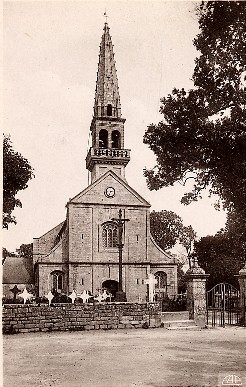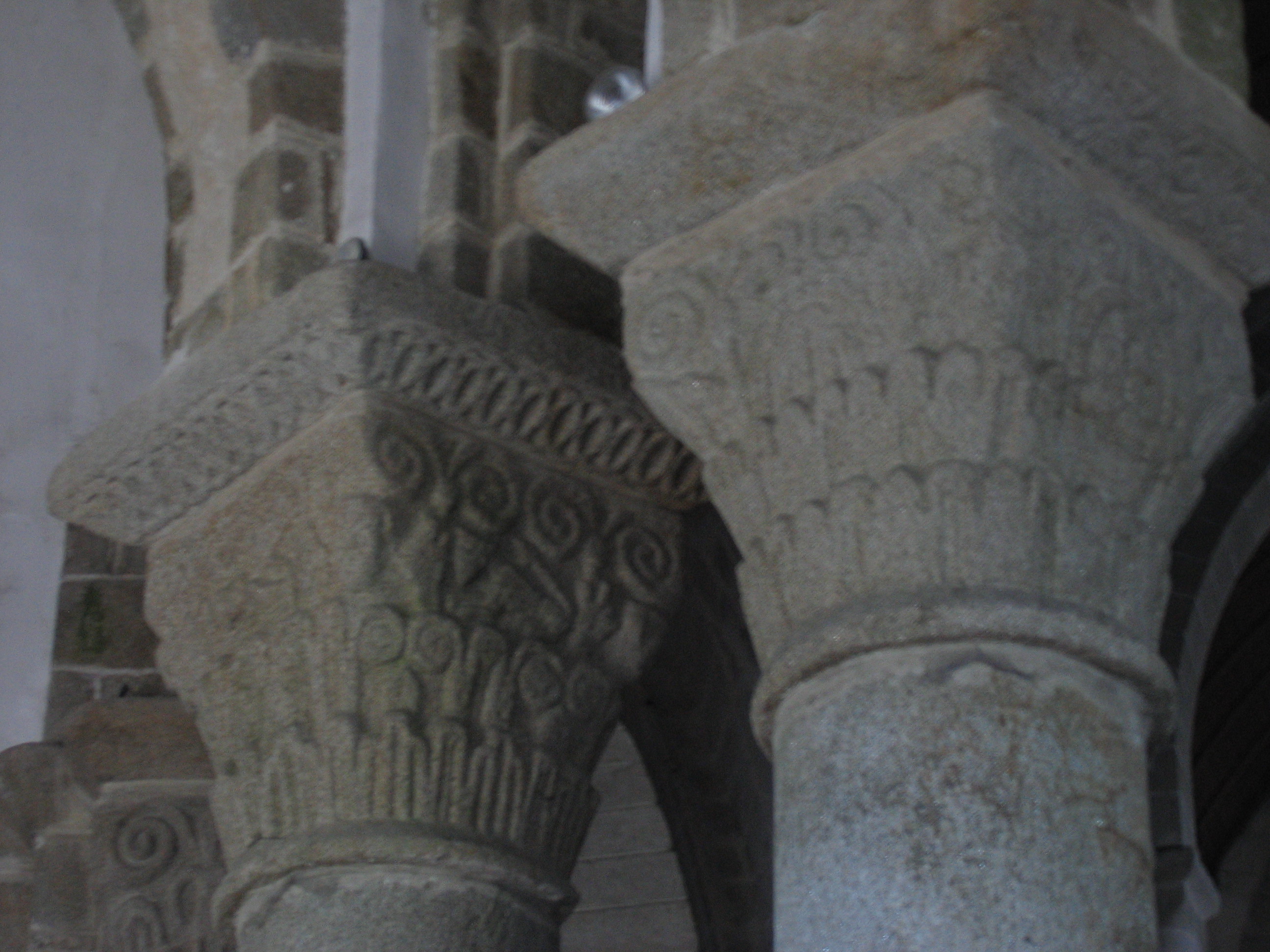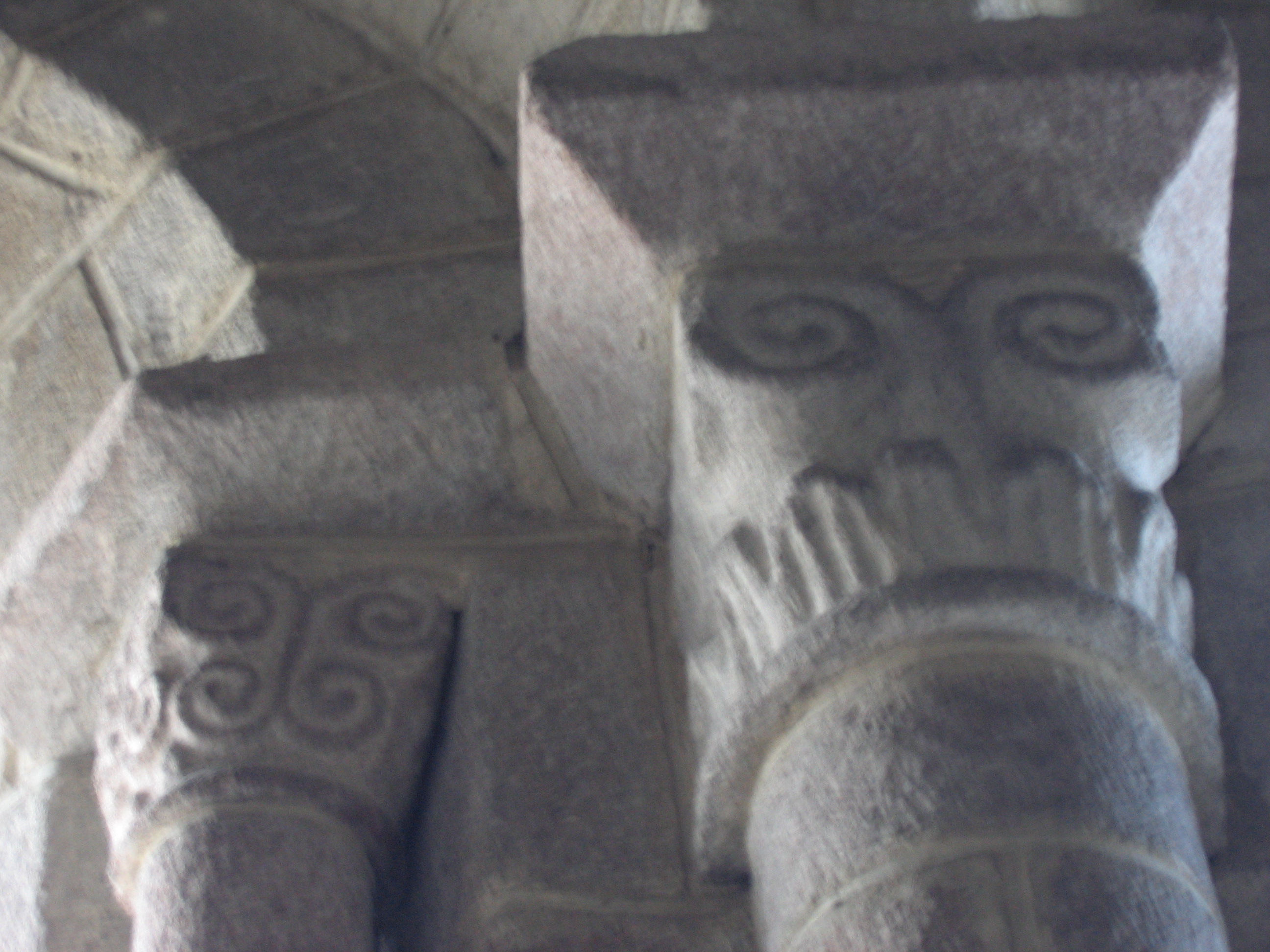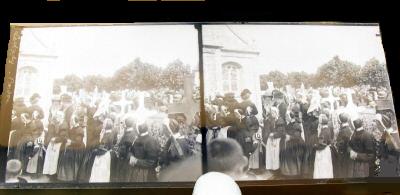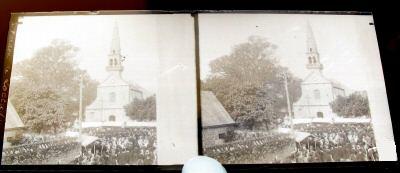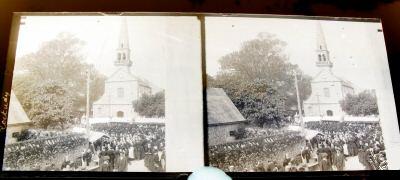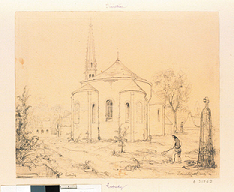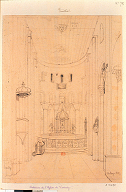It is first of all advisable to indicate the difference between the terms
monastery and abbey. A monastery is the place inhabited by monks or
religious women. An abbey is a monastery directed by an abbot or an abbess,
but the term indicates also a whole of buildings of a monastery.
The church of an abbey is described as abbatial church.
The tradition attests that an abbey existed in Loctudy, an abbot directed
the monastery. This tradition is consolidated by the name of the town of Pont-l'Abbé (Pont 'n Abbad),
the bridge of the abbot (the bridge built by the abbot) or perhaps
more logically, the bridge of the abbey. With bottom Average Age, the current place of
Pont-l'Abbé, it was to exist a strengthened hamlet which belonged to the abbey of
Loctudy. In fact, a strengthened hillock (Roz-ar-Hastel) exists since the Roman period
close to Pont-l'Abbé.
We know few things of the transitory abbey and monastery of Loctudy.
It seems that the site of the monastery was located around
the current site of the Saint-Tudy church and the presbytery.
He was put at bag by the Scandinavian conquerors in IXe century [b_corv01]
It should be stressed the fact according to which the abbey of Saint-Gildas-of-Rhuys
had been an influence on the monastery of Loctudy. At the beginning of XIIe century, the church
of this monastery was governed by three canons of which one was with the appointment of the abbot of
[Saint-Gildas-of-] Rhuis and two others with the choice of the bishop of Quimper.
[b_corv01]
An Assumption of rebuilding on computer of a model of the Saint Tudy church of Loctudy to the Middle Ages (12th century), with roman bell-tower and frontage, is presented.
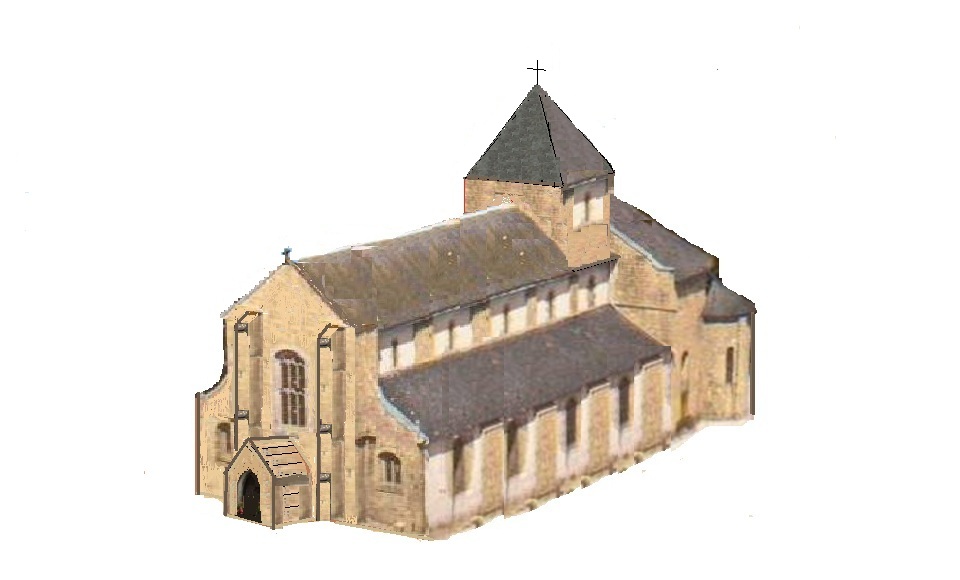
Fig. – Site Loctudy © Copyright 2011 - Assumption of rebuilding on computer of a model of the Saint Tudy church of Loctudy to the Middle Ages (12th century), with roman bell-tower and frontage.
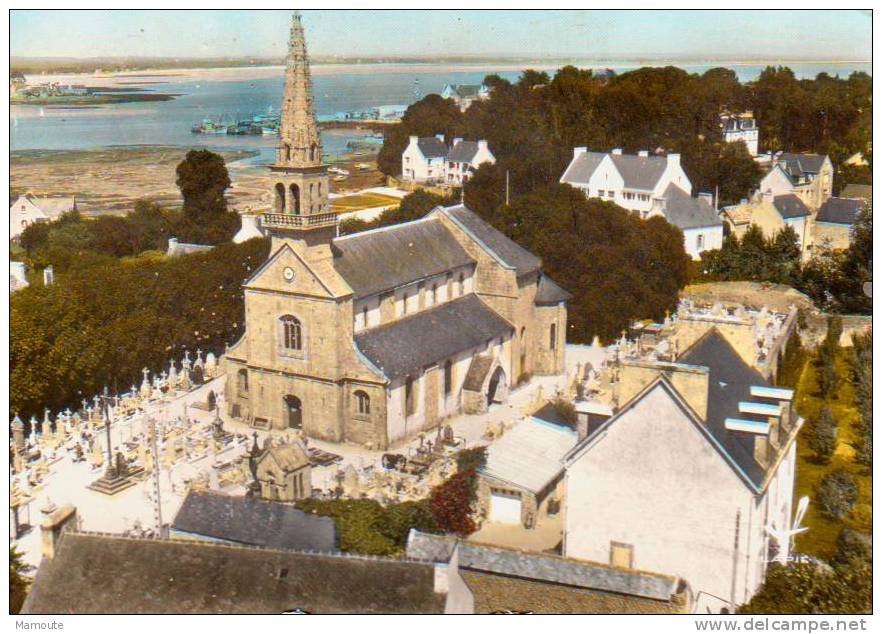
Fig. – Actual St Tudy church of Loctudy.
The vice-chancellors of Loctudy
In 1808, the vice-chancellor of Loctudy was Mr. Cariou who also undoubtedly dealt with the church
of Ile-Tudy (Island Tudy near and in face of Loctudy), without Pasteur from 1804 to 1825,
since it drew up in 1808 an inventory of the church of Ile-Tudy [b_peyr02].
In 1824, the vice-chancellor of Loctudy was "Yves Moëlo, born in Arzano (Arzannö) 27 Avril 1794"
[b_bern01 p.20-21].
"It had begun its studies with the Abbot Le Nir [Lenir], at the presbytery of Arzano, all
as [the poet] Brizeux of which it was going to remain the friend. He continued them with the College of
Quimper" [b_gral01 p. 150-151].
It "was ordered priest on May 27, 1820. Appointed vicar with Saint Mathieu [Quimper], it
remain on this place a little more than one year. In August 1, 1821, it is named vice-chancellor of Langoulen [Langolen],
then on October 1, 1824, vice-chancellor of Loctudy." [b_bern01 p.20-21]
"At Loctudy, one had not lost yet the memory of Mr. Moëlo, there is a score
years [ about 1910 ]. With the presbytery one called [still at that time ] a room
located on the turret, the "room of the revelations of Mr. Moëlo. One believed him, indeed,
gifts of prediction." [b_bern01 p.20-21]
Mr. Moëlo makes print in 1828 the book of the end of the world of which the title page
"precises the title which becomes: << the good news, i.e. the news of
nearest delivery of the Church by the end of the world >>". [ b_gral01]
"In the strange book, touffu, which it made print, it announces the end of the world for
the year 2004" [b_bern01]
"In the warning part, one reads: << three last hours of Wednesday after Sunday
from Easter, ninth day of April 1828, being with knees in the room
[of the revelations] of the presbytery of Loctudy, which is with the Eastern end of this house,
I wished to know the duration of the pelerinage of the Church and the time when it must leave
the place of its exile to fly away in the centre of its divine husband >> " [b_bern01]
"It is [ thus ] on April 9, 1828 (...) which it had the idea of writing this book and to fix, afterwards
scientists calculations (...) the end of the world in year 2004 of Incarnation ". [b_gral01]
"It appears that there were several editions of the booklet. Louis Ogès mentions one
edition of 1867 of 43 pages." [b_gral01 ]
Bibliography
See page bibliography.
Notes
[n01] Loch-Tudy.
[n02] the name which give the name to.
[n03] The small port.
[n04] this architectural term has been largely criticized.
Site Loctudy - Welcome
Site Loctudy - © Copyright 2011 – All rights reserved.
